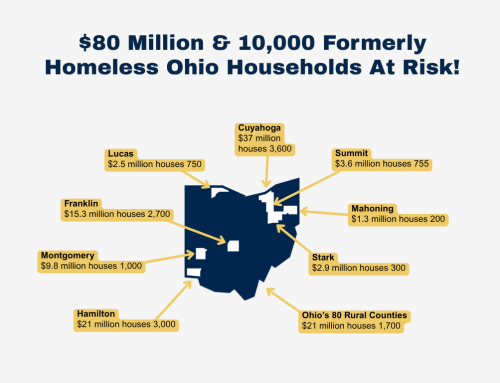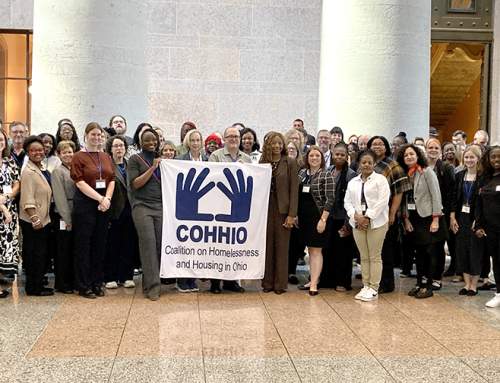COHHIO News Clips summarizes recent news articles that explore various aspects of homelessness, housing, politics, poverty research, racial equity, civic engagement and other topics to inform Ohio’s housing advocates and providers. If you would like to receive the News Clips via email, sign-up for advocacy alerts and the newsletter on our home page.
Jan. 18
Youth homelessness remains a problem in Ohio
(Ohio Capital Journal) The Coalition on Homelessness and Housing in Ohio (COHHIO) has been partnering with the Ohio Department of Education on the topic of student homelessness. But communication director Marcus Roth said homelessness counts in Ohio and across the country range from school district counts to single-day “point-in-time” counts to literal counts of people living on the land as opposed to in shelters. “We haven’t seen a major increase in homelessness in Ohio, but overall it’s kind of held steady from the best we can tell,” Roth said. “There’s not really been any really reliable data from the state to really tell.” “The visibility of the in-real-time numbers isn’t there, we just see the annual reports and have to figure out … the missing context there,” said Lisa Brooks, youth housing initiative director for COHHIO.
Cincinnati activist for homeless population looks to keep MLK’s legacy alive
(Spectrum News 1) Gaining access to mail can be a challenge for someone who is homeless, and that’s why Mona Jenkins and her team have a dedicated mailroom for people to use. Every day, the Greater Cincinnati Homeless Coalition receives mail for more than 3,000 people experiencing homelessness. “We get packages, mail — sometimes it’s prescriptions and legal documents, notifications that they are getting housing — and, so it’s really important that they have a reliable place to get their mail,” said Jenkins.
Renters are protected in other Ohio cities. Could Cleveland be next?
(WKSU) Tenants in a number of Ohio cities, ranging from Akron to Yellow Springs, have something that their counterparts in Cleveland lack: renter protection rights. In Cleveland, tenants can be evicted for being just one day late on rent. Landlords can also refuse to rent to tenants who pay using alternate sources of income, like housing choice vouchers or disability benefits. Fair housing advocates and community groups in Cleveland are asking Mayor Justin Bibb and city council to endorse legislation that would provide Pay to Stay and Source of Income (SOI) protection, as well as to support the establishment of a group to develop a comprehensive Renters’ Bill of Rights.
Mayors feel powerless to reduce homelessness
(Axios) America’s mayors know their constituents hold them accountable for homelessness, but many don’t feel they have the tools or power to fix things, a brand new survey says. A poll released Tuesday by the Menino Survey of Mayors found that 73% of mayors believe that voters hold them highly accountable for addressing homelessness, but only 19% think they have much control over the issue.
Akron’s Access homeless shelter to use hotels to expand capacity due to growing need
(Cleveland.com) AKRON, Ohio – Access, Inc., an Akron-based homeless shelter for women and children, is launching a new program to offer safe shelter for Summit County residents experiencing homelessness by providing area hotels as a temporary place to stay. The Services Expansion Program is a pilot program offered in partnership with the city of Akron and the Continuum of Care. The program will be used when Summit County shelters reach capacity or when a person needs an accessible room and all accessible rooms in Summit County shelters are occupied. All shelter guests will be referred for services by calling the city’s 2-1-1 help line.
Troy seeks federal funds to renovate struggling homeless shelter
(Dayton Daily News) TROY — The city of Troy and the Miami County Family Abuse Shelter are combining efforts in hopes of securing COVID-19 response money to do nearly $500,000 in renovations to the Buckeye House homeless shelter for men. The shelter, located at 411-413 S. Market St. in Troy, is operated by the Family Abuse Shelter and Barb Holman, its executive director. The Buckeye House shelters 200 homeless single men and families each year. The shelter is ready to move forward if the grant receives final approval and once bids are received. The grant would be administered by the city.
City looks for ways to fund housing effort
(The Toledo Blade) Among recommendations in a 10-year housing plan a Toledo city agency fully released is the identification and creation of a dedicated funding stream for improving the city’s housing stock — possibly from a levy. But Rosalyn Clemens, director of the city’s Department of Neighborhoods, said last week city officials realize another local tax will be a tough sell to voters, which is why they are first trying to get something rolling using other resources, such as the city’s American Rescue Plan Act allocation and a federal loan program that up to now has been largely overlooked in Toledo.
Northland isolation and quarantine shelter helps Columbus homeless recover from COVID-19
(The Columbus Dispatch) Located at the America’s Best Value Inn on Dublin-Granville Road in Columbus’ Northland neighborhood, an isolation and quarantine shelter for the homeless (SIQ) opened in April 2020 as a way to house homeless residents who had tested positive for COVID-19 or who had been exposed to the virus because existing shelters aren’t set up to provide the necessary distancing. The shelter is operated by nonprofits Community Shelter Board, the YMCA of Central Ohio and Lower Lights Christian Health Center. The shelter has enough room to accommodate between 90 and 100 people, according to Cloud. Heritage said operating the shelter costs $250,000 per month and that the cost will grow as the Community Shelter Board increases the facility’s capacity to take in more patients.
Springfield, Clark County task force to address homelessness and pandemic impact
(Springfield News-Sun) The Clark County Board of Commissioners approved the creation of an emergency oversight task force to assess ways to address homelessness in the area, an issue exacerbated by the pandemic, during its meeting last week. County commissioners said that they, as well as the City of Springfield, recognized “that families and individuals have been and continue to seek emergency housing at unprecedented numbers due in part to the impact of COVID-19,” according to the Jan. 5 resolution they passed. “We’re seeing that as we moved into the pandemic, we were handling these types of emergencies that we weren’t equipped for,” said Clark County administrator Jennifer Hutchinson.
Cleveland home rental cost increases as incomes drop 10%, report shows
(News 5) CLEVELAND — The housing market remains in high demand and it’s forcing the cost of rent to keep going up. A report by Freddie Mac, the housing finance group chartered by Congress, shows between 2019 and October 2021, rent prices increased by 10% in the Cleveland area. However, unlike many metro cities, renter income dropped by more than 10%. Yet, the report notes multi-family home properties will continue to grow this year up to $500 billion while the rent to live in one is expected to increase by about 4%. The thing is about half of all renters spend at least 30 percent of their paychecks towards rent, according to a RealPage study. Though the study notes incomes are increasing, the challenge remains for many Clevelanders.
Shared Housing Tackles Loneliness in Homeless Services
(Shelterforce) Across the country, in urban and rural housing markets, renters contend with lower vacancy rates and rising costs as they compete for fewer and more expensive housing options. Since January 2021, the national median rent has increased by 16 percent, rising over 25 percent in 22 of our largest cities. Shared housing is when two or more unrelated people live together, split the cost of rent, and share common spaces. Implemented in several communities across the country, the best practice for shared housing is for each person to have their own bedroom in a permanent housing context. Shared housing is a norm across the private housing market, but households exiting homelessness are primarily offered a single-unit option by housing providers.
FHFA nominee pledges to address racial homeownership gap
(Lima Ohio) Senate Democrats on Thursday pressed Sandra Thompson, the president’s nominee to run the Federal Housing Finance Agency, on how to leverage the agency to close the racial gap in homeownership. Senate Banking Chairman Sherrod Brown, D-Ohio, said Thompson would have a major role to play in closing the gap, as well as preserving affordable housing. The racial homeownership gap is wider than it was in 1960, eight years before Congress passed landmark housing discrimination legislation, according to the Urban Institute, a think tank.
Perseverance project brings more affordable housing to Over-the-Rhine
(Soapbox Media Cincinnati) Now open and fully-occupied, a new multi-family residential development in Over-the-Rhine brings much-needed affordable housing to the booming, eclectic Vine Street corridor. The project — dubbed Perseverance — was a partnership between nonprofit housing advocate Over-the-Rhine Community Housing (OTRCH) and development corporation 3CDC. It includes 32 residential apartments and five commercial spaces, spanning three historic buildings and one new infill building on a former vacant lot.
Jan. 11
Columbus business leaders plan tiny home village focused on serving homeless population
(Business First) A group of business leaders led by Columbus attorney John Perez is planning a tiny home development on Columbus’ southeast side that would serve formerly homeless residents. The gated development called Vista Village initially would include 42 homes, a community center, and a park. It’s slated for a 15-acre site south of Refugee Road and west of Hamilton Road… Perez says each 420-square-foot home in Columbus will contain a bathroom, bedroom, kitchen, and have a front porch. Each resident will have an individualized plan to transition out of the community within two years as they learn new life skills, get trained for jobs, and receive services. Residents will pay minimal monthly rent and have access to GED, job training, and other services at the included community center.
Recorder: $2 million collected for Ohio Housing Trust Fund
(The Eyria Chronical-Telegram) Lorain County Recorder Mike Doran announced that his office collected more than $2 million to benefit the Ohio Housing Trust Fund in 2021… Over the past 27 years, the Ohio Housing Trust Fund has helped nearly 1 million Ohioans with a wide range of needs, Doran said. The Trust Fund provides grants and loans to eligible organizations to conduct a range of housing and homelessness-related activities, including the development and preservation of affordable housing, supporting homelessness services, providing low-income households with resources for home repair and helping older adults age in place. At least half of all awards go to projects outside urban areas.
Manchin’s Choice on Build Back Better: Mine Workers or Mine Owners
(New York Times) Senator Joe Manchin III is caught between the mine workers’ union, which supports President Biden’s social policy and climate bill, and mine owners in his state who oppose it… While most of the attention to the fate of the social safety net and climate change bill has fixed on ideological divisions among Democrats over its largest provisions and overall cost, the battle underway over parochial issues in Mr. Manchin’s state could ultimately matter more than the public pleas of liberal groups and relentless bargaining by Democratic leaders.
Emergency shelters house additional guests as freezing temperatures continue in Greater Cincinnati
(WLWT News 5) These frigid temperatures are prompting emergency shelters all over the Greater Cincinnati area to open their doors. Thousands are experiencing homelessness in the area and local organizations are working to meet the influx of needs, especially during the winter months. An overwhelming 70 percent of those needing a place to stay are men. Shelters are also having to account for COVID-19 and social distancing, so there is lower capacity. There is also a greater need for overflow spaces.
State Tax Receipts Continue Strength In December
(Gongwer) Ohio’s finances continued to shrug off the impacts of the coronavirus pandemic last month, with total tax intake bolstered by higher-than-expected returns in sales and income taxes. The latter category was particularly strong in December, which saw it beat Office of Budget and Management projections by about $130 million, or 15%, according to preliminary revenue data provided by the state. For the fiscal year to date, the personal income tax is ahead of the estimate prepared for the current biennial budget by about $296 million, or 6.4%, the agency reported. The $4.915 billion collected through the first half of FY 2022 is 3% behind last year’s pace but only because of the pandemic-related changes in the tax filing schedule for FY 2021.
The well-heeled developers, commercial property owners behind Ohio bill that could increase taxes for homeowners
(Cleveland.com) COLUMBUS – Ohio developers and large commercial property owners have wanted to curb how school districts get involved in property value disputes, but bills they’ve backed all failed in the Ohio General Assembly — until 2021. The Coalition for Fair Property Tax Valuations, a group of developers, property owners and real estate professionals, and other heavy hitters, such as the Downtown Cleveland Alliance and Doug Price of Northeast Ohio developer K&D Group, are steps from stripping away power from local school boards. The Ohio Senate passed a bill Dec. 15 that would prohibit schools from initiating property assessments they deem undervalued at county boards of revision.
Community leaders react to swearing in of new Cincinnati city government
(Spectrum News 1) Kevin Finn, president and CEO of Strategies to End Homelessness, said a lack of affordable housing is the most pressing problem facing Cincinnati and other communities across the country… The group led the charge for Issue 3, a failed charter amendment last spring that would have required the city to designate at least $50 million a year for affordable housing. But voters overwhelmingly rejected the issue, with 73% voting against it. While those affordable housing statistics are now a few years old, Finn said the struggle remains urgent. Finn said he’s “very encouraged by the fact that several of the new members of council and the new mayor, express a desire to address affordable housing issues.”
House Intel’s next top Republican prepares a sharp turn from the Trump years
(Politico) Rep. Mike Turner, the new top Republican on the House Intelligence Committee, wants to turn the page on the panel’s partisan past. He’s got his work cut out for him. For four years, the committee was a chaotic microcosm of the partisanship that dominated Donald Trump’s presidency, in part due to ex-Rep. Devin Nunes’ (R-Calif.) pro-Trump sycophancy. Now that Nunes has left Congress and the intelligence panel, lawmakers in both parties are hoping the bitter fights can cease with the GOP side led by Turner — who’s occasionally broken from the ex-president and is generally more independent-minded than the man he’s succeeding.
More than 1,700 congressmen once enslaved Black people. This is who they were, and how they shaped the nation.
(Washington Post) From the founding of the United States until long after the Civil War, hundreds of the elected leaders writing the nation’s laws were current or former slaveowners. More than 1,700 people who served in the U.S. Congress in the 18th, 19th and even 20th centuries owned human beings at some point in their lives, according to a Washington Post investigation of censuses and other historical records. The Washington Post created a database that shows enslavers in Congress represented 37 states, including not just the South but every state in New England, much of the Midwest, and many Western states.
Jan. 7
Omicron Surge and Homeless System Response
(HUD) Over the next several weeks COVID-19 infections are expected to continue climbing as the Omicron variant predominates. The increased infectiousness of this mutation is causing surges in COVID-19 cases throughout the United States. While the Centers for Disease Control and Prevention (CDC) has reduced isolation periods for the general population in its updated Quarantine and Isolation guidance, released January 4, 2022, it clarified that the recommendation for isolation periods in high risk congregate settings, like homeless shelters, continues to be 10 days.
Cleveland Heights council enacts ‘Tenants Pay-to-Stay’ eviction protections during pandemic
(Cleveland.com) CLEVELAND HEIGHTS, Ohio — In one of its final pieces of legislation, the outgoing City Council last month enacted additional safeguards for renters facing eviction during the pandemic. The new “Tenant’s Right to Pay to Stay” ordinance was passed unanimously at the outgoing council’s final meeting Dec. 20 after being introduced back in June. The legislation received continued backing by Councilman Mike Ungar, its sponsor, along with Council Vice President and Mayor-elect Kahlil Seren.
Anti-Eviction Advocates Want the DOJ to Support the Right to Counsel Movement
(Shelterforce) The revival of an office within the Department of Justice that is focused on equitable legal representation has tenants’ rights advocates calling on the federal government to do more to strengthen the right to counsel movement… Advocates want to see Access to Justice lawyers write briefs and statements of interest in support for right to counsel in key eviction cases. They say the office can fund in-depth analyses of existing right to counsel programs to establish best practices for legal representation, diversion programs that provide payment plans or other alternatives to tenants facing eviction, and other policies to keep people in their homes.
Stakeholders Mull Independent Redistricting Panel Ahead Of Court Rulings
(Gongwer News Service) Forthcoming Ohio Supreme Court rulings on the state’s four-year congressional and Statehouse maps could trigger renewed debate over the concept of an independent redistricting commission. With the fate of those GOP-crafted maps hanging in the balance, it is too early for a full post mortem on how the reforms adopted by voters in 2015 and 2018 played out. But early reviews from both sides of the constitutional dispute fault politicians themselves – rather than the process – for officials’ failure to reach compromise on 10-year legislative and congressional districts. “I think the mapmakers failed much more than the process did because they continued to put their own partisan interest before the rights of the voters,” said Jen Miller, executive director of the League of Women Voters of Ohio, which has sued over both sets of maps.
Ohio foodbanks starting to go hungry
(Ohio Capital Journal) As the coronavirus pandemic enters its third year, Ohio’s foodbanks are in a perilous state, an official who helps run them said Wednesday. The centers have gotten through the crisis with special relief funds and help from the National Guard. But as happened repeatedly through the pandemic, foodbanks are facing increasing strains as temporary relief is poised to expire, said Lisa Hamler-Fugitt, executive director of the Ohio Association of Foodbanks. Worse, the foodbanks’ calls for help are being made to a pandemic-weary public… To counter all these headwinds, the Ohio Association of Foodbanks is asking the DeWine administration for support from the more than $3 billion in American Rescue Act funds still available to the state. The association is asking for $183 million to bolster foodbank infrastructure and for supplies.
Evictions rising now that pandemic moratorium has been lifted
(Scripps National) When the federal eviction moratorium was in place, evictions were down across the country. Now, those numbers are a bit more complicated. “For example, in some places currently, you can’t file to evict someone who has already filed for rental assistance, and so in places like that, we’ve seen that numbers have not gone up as much,” said Emily Lemmerman, a research specialist at Princeton University’s Eviction Lab. “In other places, eviction filings are closer to 100% of the historical average.” The Eviction Lab has been tracking filings in six states and 31 cities. They say that in Connecticut, Houston, Indianapolis, Cincinnati, and Columbus, evictions are back to pre-pandemic levels.
Help available for those facing evictions
COLUMBUS, Ohio (WCMH) — Columbus resident Kim Williams contacted Better Call 4 desperate for answers. As a retired social aid worker, Williams says she is determined to find affordable housing for several tenants she knows facing eviction. “So, we need help, we need help, they need help,” Williams said. The residents are being evicted after their landlords raised their rent or their income requirement, Williams said. “They’re living from couch to couch because the shelters are already full with the weather,” she added.
Community of Hope founder Amber Donovan dies
(Cleveland.com) CLEVELAND, Ohio — Amber Donovan — executive director of Community of Hope and a passionate advocate for Cuyahoga County’s homeless youth and those aging out of foster care — has died after a lengthy battle with cancer. Community of Hope board president Mike Smith on Wednesday confirmed Donovan’s passing. “Amber never let her personal fight interfere with her commitment to the youth she loved so dearly and who she willed with all her might to overcome their own personal struggles and challenges in this world,” Smith stated in a Wednesday email. “This was, and is, the essence of the organization she single-handedly established to break the cycle of poverty in northeast Ohio.”
Maryhaven CEO steps down in compensation dispute with board
(Columbus Business First) Shawn Holt resigned Wednesday as CEO of Maryhaven Inc. following a board investigation of compensation he received without directors’ approval. COO Adam Rowan, who joined the Columbus nonprofit behavioral health provider in 2017, was named interim CEO… Holt’s compensation, bonuses and benefits were subject to his employment agreement per the nonprofit’s bylaws, the release said, while the CEO in turn determined compensation for other executives. “The investigation revealed that Holt received compensation outside of his employment agreement,” the release said, but did not specify amounts. Holt’s annual salary was $245,000 in 2019, the most recent year available for Maryhaven’s IRS return.
Ohio AG Yost says state law change criminalizes partnerships between elections officials and private groups, but most routine work is OK
(Cleveland.com) COLUMBUS, Ohio – Breaking a new Ohio law barring elections officials from collaborating with private groups is a first-degree misdemeanor and a felony for repeat offenders, state Attorney General Dave Yost has said in a new written legal opinion. But the law change, which Republican state lawmakers passed as a response to elections officials’ accepting grants worth millions of dollars from Facebook founder Mark Zuckerberg for elections administration during the 2020 presidential race, doesn’t apply to routine official elections work, Yost said… Because the law bars collaboration between election officials and private groups, without defining what “collaboration” is, Yost turned to dictionary definitions of the word. He decided the new law’s ban would only apply when elections officials and private groups “jointly administer a project.”
Jan. 3
Advocates say funding Alabama’s housing trust fund could help prevent homelessness
(Alabama.com) States and cities across the country have funded affordable housing development through housing trust funds. Alabama created its fund in 2012, but it is one of a handful of states with an empty trust fund… Advocates see an opportunity for Alabama to use part of the state’s federal COVID-19 relief funds to fund the trust fund next year. The state is set to receive another payment of more than a billion dollars in the middle of 2022… Bambi Baughn runs a group that helps house the homeless, the elderly, and others in need in a rural part of Ohio. She remembers an electrician who called her office seeking help for an elderly widow who was without heat and needed money to get her furnace repaired. “We put (in) a furnace with weatherization, and she got to stay in her house and be warm,” said Baughn, who is Executive Director of the Community Action Commission of Fayette County in Ohio. Because Ohio has a statewide housing trust fund with $55 million in funding in 2021, Baughn was able to help. Ohio’s fund draws from a tax on mortgage recording fees, similar to the funding model that was voted down in the Alabama legislature.
The Bill for My Homelessness Was $54,000
(New York Times) My journey into homelessness was traumatic, but it was also incredibly expensive, and that’s what I want to focus on here. By the time I walked away from that park bench two years later, I had accrued more than $54,000 in debt. Leaving homelessness did not mean immediate freedom. Instead, coming back to the world of the housed meant first having to navigate an obstacle course of fees and fines that I had incurred while homeless. In the process, I learned that the most traumatized and vulnerable members of our society are often burdened with bills that they have no idea how to handle, making finding secure housing that much harder. These bills are another way that American society criminalizes people experiencing homelessness — hidden penalties that can start with the towing and impoundment of the vehicles people sleep in and that can continue with a long list of misdemeanors, such as loitering, camping, asking for money in public and even standing in one place for too long.
How homelessness in Cleveland is being addressed in 2022
(News 5 Cleveland) Molly Martin, Director of Strategic Initiatives with the Northeast Ohio Coalition for the Homeless, told News 5 there are other concerns the homeless face in 2022. “NEOCH is extremely concerned about the risk the omicron variant poses to people experiencing homelessness in our community. The number of people infected with COVID in our shelter system is much higher this year than they were last year,” Martin said. “NEOCH saw a 30% decrease in unsheltered homelessness in 2020 thanks to the availability of hotel rooms and federal funding to de-congregate shelters, but now we are back to pre-pandemic numbers when it comes to unsheltered homelessness. There is difficulty finding testing is another one of the struggles facing the homeless community. Front line staff working in homeless shelters and homeless street outreach are out with COVID and staff capacity is threatened. Limited testing availability for staff and people in shelter is also a concern. Main point: there were policies that worked in 2020 to decrease homelessness and we are not using them anymore,” Martin said.
Two Americas: Homelessness in Ashtabula County during a pandemic
(News 5 Cleveland) There are two sides to Ashtabula County. The largest in Ohio by size, but less than 100,000 people call this place home. And then, there are those without. Homelessness in Ashtabula County isn’t what you see in big, crowded cities. It’s more subdued. The people, less visible, found hidden in places not meant for human habitation. Abandoned buildings, in the woods, park benches, sometimes automobiles,” said Steve Sargent. Sargent has dedicated his life to helping. More than thirty years as the executive director at Samaritan House — the county’s one and only emergency homeless shelter. Homelessness, he says, has changed. “It’s more chronic and the problems are so compounded,” Sargent explained. “It’s not just one thing, like ‘I lost my job.’ Yeah, you lost your job because of this and this and this and COVID just made the cup overflow.”
Urbana’s Legacy Place tackles affordable housing by giving historic buildings new life
(Spectrum News) URBANA, Ohio — The former Urbana South Elementary along with its counterpart Urbana North consolidated into a new school years ago, leaving their century-old buildings behind to be demolished, but the city wasn’t ready to let them go and in 2021, they got their wish. Legacy Place started accepting residents at the two buildings in the summer and hopes to finish construction and take in residents in a renovated Douglas Inn early next year. To Marcia Bailey, Champaign County’s economic development director, the project offered two great benefits, preservation of city character, while improving the region’s housing stock. Six years in the making, the three-building project, by developers Flaherty & Collins, creates 51 units for residents 55 years or older making 60 percent or less of the municipal area median income, about $25,000 a year. Legacy Place also reserves units for those with disabilities. “We knew that we needed to attract more people into the community, and we can’t do that without housing,” Bailey said.
Driving Park-based foundation helps develop affordable homes in neighborhood
Erin Prosser, the city’s assistant director of housing strategies, said Columbus officials are working on housing strategies for 2022, including preserving and creating more affordable housing in neighborhoods such as Driving Park, where home prices and rents like elsewhere continue to climb. “Part of preserving affordability is protecting existing homeowners,” she said. That will take a wide range of strategies that haven’t been developed yet, she said. Many older homeowners are worried that rising property taxes could force them to sell. Prosser said. “That’s an issue for our state government,” she said. “There’s limited ability to impact that at a city level.”
“I Love West Dayton” launching affordable housing project in 2022
(WYSO) Community group “I Love West Dayton” is launching a housing project called “No Place Like Home” in January. Their goal is to raise one hundred thousand dollars by December of 2023. The group hopes to acquire and rehabilitate about eight tax-foreclosed homes in West Dayton. They are teaming up with Home Depot, Premier Health and local volunteers to carry out the project.
How do public officials make Land Bank decisions? Artificial Intelligence may seek patterns
(Eye on Ohio) Using machine learning methods, Eye on Ohio looked at property remediation in several counties to look deeper at a process that has transformed the rust belt over several years. Certain factors such as proximity to valuable properties or school district made a property more likely to be picked for remediation in some counties. And in certain areas, officials responsible for economic recovery are the same people in charge of that remediation.
New-Lima developing low-cost senior housing
(Lima News) A local non-profit is stepping up to fill the growing need of affordable housing for seniors on fixed incomes. According to last week’s land transfers, New-Lima Housing for the Future (NLHF) purchased a lot from St. Rita’s near the intersection of Jameson Avenue and West Spring Street for $25,000. NLFH plans to turn the site into a duplex. NLHF Executive Director Scott Frenger tells The Lima News the organization purchased the lot from St. Rita’s to provide affordable housing options for seniors.
Akron Snow Angels’ inventory of coats and boots for the homeless stolen as winter gets underway
(Spectrum News 1) AKRON, Ohio — A nonprofit that serves Akron’s most vulnerable residents in winter, handing out clothing, sleeping bags, back packs and toiletries, recently lost thousands of dollars of new inventory in a burglary. “I was brought to tears about it,” said Erin Victor, founder of Akron Snow Angels. “I was like, ‘Come on now. We work really hard to try to find really good deals.’” Those deals were on newly purchased coats, boots and other essentials that are hard for Akron’s poorest residents to come by. When the warehouse was robbed, Snow Angels lost about 80% of inventory, totaling about $25,000, she said.








